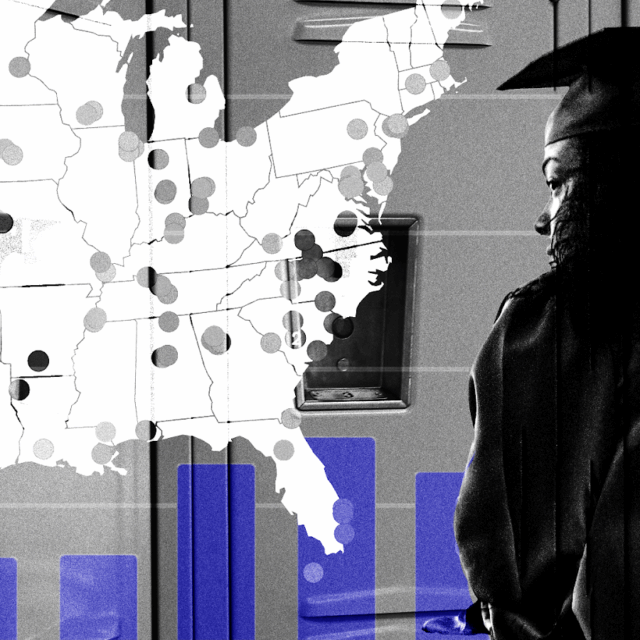Road Rage Shootings Remain Alarmingly High
12.19.2024
One October day in Phoenix, Arizona, 8-year-old Cassidy Moreno and her sisters were in the back seat after school when their father argued with another driver at a four-way intersection. The dispute escalated, and both men exited their cars and had a physical fight. As Cassidy’s father drove away, the other man fired into their car, striking Cassidy in the middle seat. She did not survive.1“Eight-Year-Old Girl Dies, Man Arrested after Road Rage Shooting in North Phoenix,” ABC15 Arizona in Phoenix (KNXV), October 27, 2022, https://www.abc15.com/traffic/police-investigating-shooting-at-16th-street-and-greenway-parkway-in-phoenix.
Road rage is growing more common, with routine trips marred by arguments, threats, and dangerous driving. In the United States, road rage comes with an additional challenge: drivers who keep their guns in their car risk turning a fleeting conflict into a lifelong tragedy. Road rage shootings kill or wound hundreds of people every year in the United States, and they are enabled by lax gun laws around the country.
Having a gun in the car emboldens drivers to behave in a way they wouldn’t otherwise. Aggressive driving on the road is not uncommon—roughly eight in 10 drivers surveyed by the AAA Foundation for Traffic Safety reported experiencing aggressive driving in the last month. But the presence of a gun can turn such an encounter from an unpleasant few moments to a dangerous incident for drivers, their passengers, and everyone on the road. Research has found that motorists with a gun are more likely to exhibit road rage, such as making obscene gestures and cutting off other cars.2David Hemenway, Mary Vriniotis, and Matthew Miller, “Is an Armed Society a Polite Society? Guns and Road Rage,” Accident Analysis & Prevention 38, no. 4 (July 2006): 687–95, https://doi.org/10.1016/j.aap.2005.12.014. Just the presence of a gun in the car is associated with a greater likelihood of dangerous driving.3Brad J. Bushman et al., “The Weapons Effect on Wheels: Motorists Drive More Aggressively When There Is a Gun in the Vehicle,” Journal of Experimental Social Psychology 73 (November 2017): 82–85, https://doi.org/10.1016/j.jesp.2017.06.007.
Using Gun Violence Archive’s data to analyze road rage incidents, Everytown Research & Policy found that the number of road rage shootings is much higher than before the pandemic. For the past two and a half years, violent crime has been trending downward, according to nearly every major data source. Yet, even as crime trends closer to pre-pandemic levels, one measure remains stubbornly high: road rage shooting deaths and woundings continue to pile up. In 2018, over 200 people were shot and killed or wounded in a road rage incident; by 2023, those numbers had doubled. These incidents translate to a person being shot in a road rage incident in 2023 every 18 hours.
18 hours
In 2023, someone was shot and wounded or killed in a road rage incident on average every 18 hours.
In 2018, at least 58 road rage shooting deaths occurred in the United States; by 2023, the number had doubled to 118. The same trend occurred with gun injuries: at least 160 people were wounded in a road rage incident in 2018, with a staggering increase to 365 people in 2023. These incidents translate to a person being shot and either wounded or killed in a road rage incident in 2023 every 18 hours, on average.
Road Rage Shooting Deaths and Injuries, 2018 to 2023
Last updated: 10.10.2024
No region of the country was immune to road rage. But some states fared better than others.
While nearly every state in the country saw at least one victim from a road rage shooting in 2023, a significant disparity exists between states. The five states with the highest rate of people shot in road rage incidents are New Mexico, Arizona, Tennessee, Colorado, and Wisconsin. These states make up only 8 percent of the US population but saw 20 percent of road rage shooting victims.
This disparity occurs across geographic regions as well. The southern United States, which has weaker gun laws on average than the nation overall, sees the highest rates of victimization from road rage shootings—more than double those in the Northeast. The nine northeastern states4Connecticut, Maine, Massachusetts, New Hampshire, New Jersey, New York, Pennsylvania, Rhode Island, and Vermont have both the lowest rates of victimization from road rage shootings and overall far stronger gun laws than much of the nation.
Road Rage Incidents by State, 2023
The strength of carry permit laws impacts road rage
Looking in particular at one important gun policy—rules for carrying a concealed, loaded gun in public—the association between loosening those rules and road rage is clear. The requirements in order to obtain a concealed carry firearm permit—which may involve passing a background check, completing safety training and live-fire instruction, and other criteria—fall along a spectrum of protection: eight states have historically had the strongest protections;5Strongest historical protections: CA, CT, DE, HI, MA, MD, NJ, NY. These states required a person to show a specific reason or “good cause” in order to carry a concealed gun in public, or otherwise gave authorities broad denial authority, immediately prior to the Supreme Court’s ruling in New York State Rifle & Pistol Association Inc. v. Bruen in June 2022. The Bruen decision barred states from requiring any type of “good cause” justification for concealed carry permits, significantly limiting their ability to protect their residents. After the decision, these eight states have continued to maintain a permit requirement. as of 2023, 15 states had more moderate protections6Moderate protections: CO, IL, LA, MI, MN, NC, NM, NV, OR, PA, RI, SC, VA, WA, WI. These states required a permit as of the end of 2023 and did not require a “good cause” showing or otherwise give authorities broad authority to deny a permit immediately prior to the Supreme Court’s Bruen decision. and the remaining 27 states did not require a permit at all to carry a concealed gun in public.7Permitless: AL, AK, AR, AZ, FL, GA, IA, ID, IN, KS, KY, ME, MO, MS, MT, NE, NH, ND, OH, OK, SD, TN, TX, UT, VT, WV, WY. These states did not require a permit as of the end of 2023. As is clear in the chart below, permitless states have by far the highest rate of road rage shootings resulting in injury or death.
Rates of Injuries and Deaths in Road Rage Shootings by Concealed Carry Framework
Last updated: 12.3.2024
States that did not require a permit had more than triple the rate of road rage shooting victimizations than those states with the historically most protective standards.
In terms of overall crime rates, states that have weakened their permitting systems have seen a 13 to 15 percent increase in crime.8John J. Donohue, Abhay Aneja, and Kyle D. Weber, “Right-to-Carry Laws and Violent Crime: A Comprehensive Assessment Using Panel Data and a State-Level Synthetic Control Analysis,” NBER Working Papers (National Bureau of Economic Research, November 2018), https://www.nber.org/papers/w23510.pdf. But what the analysis about road rage and gun-carrying regulations shows is that the states with weaker standards have also made it easier and more likely for people to take their guns out of their homes and into their cars. The results on our streets and highways have been tragic.
Having a loaded gun readily available in a tense situation is a road to disaster.
There has been a welcome 11 percent decline in road rage shootings since 2022, but they continue to occur with a frequency much higher than before the pandemic. While we do not definitively know what has driven this change, the pandemic and its continuing effects have brought all kinds of new stressors into people’s lives. The record spike in gun sales that started in 2020 could also be a factor. And finally, our research suggests that requiring a permit to carry a concealed handgun in public can help protect our communities from road rage shootings.
More research on road rage shootings is needed, but one thing is clear: rates of road rage shootings remain dangerously high. That’s why action from policymakers to prevent gun violence is now more urgent than ever.




